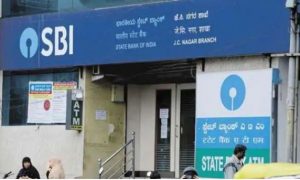Some lenders follow a mixed approach of changing both EMI and tenures to manage the monthly debt burden of borrowers, ICRA says
An increase of 150-250 basis points (bps) in interest rates may lead to EMIs going up by 12-21 per cent in the case of prime home loans and 8-13 per cent in the case of affordable home loans while maintaining the original tenure, according to a report by rating agency ICRA.
Read More: PhonePe enables UPI activation using Aadhaar-based OTP authentication
“There is limited headroom to increase the tenure as incremental loans in the prime home loan segment already have long tenures and a further extension in loan tenures will lead to overall tenures extending beyond the working life of the borrower. In the case of affordable home loans, the extension of loan tenures can lead to negative amortisation, given the high interest rates,” ICRA said.
It added that a rising interest rate scenario presents a dilemma for housing finance companies (HFCs). To deal with the situation, mortgage lenders normally increase the equated-monthly instalments (EMIs) while keeping tenures constant or do it vice-versa. Lenders usually extend the tenure first to keep the borrower’s monthly debt burden in check.
Manushree Saggar, vice-president & sector head (financial sector ratings) at ICRA, said, “As per ICRA’s analysis, with a 150-250-bps increase in interest rates, EMIs could go up by 12-21 per cent in case of prime home loans and 8-13 per cent in case of affordable home loans while maintaining the original tenure.”
Saggar added that the impact is expected to be lower in the case of the affordable home loan segment vis-à-vis the prime home loan segment since those loans are already at high rates. However, even with revised EMIs, the fixed obligation-to-income ratio (FOIR) is expected to increase by less than 10 percentage points and, hence, remain manageable, unless the original loans were given at aggressive FOIRs.
Read More: Gold Rates Today: Yellow Metal Trades Flat, Silver Holds Rs 61,000; Check Latest Prices
“The increase in FOIRs could also be partly offset by the expected increase in income levels with the improvement in the operating environment. Additionally, the asset quality for home loans benefits from the fact that home loan EMIs get priority over other obligations as loans are mostly taken for self-occupied houses,” ICRA said.
It added that lenders may also not pass on the entire increase to the end borrowers given the competitive market space and thus the impact on EMIs could be further limited.
“As per our estimates, HFCs have increased the lending rates by about 50-100 basis points (bps) in H1FY2023 compared to the 190-bps hike in benchmark repo rates. Also, some lenders might follow a mixed approach of changing both EMI and tenures to manage the monthly debt burden of borrowers,” ICRA said.
Saggar also said that while there is an expectation of a further increase in interest rates, lenders have limited headroom to increase loan tenures; thus EMIs would have to be revised upwards. “However, this is unlikely to impact the HFCs asset quality indicators significantly.”





































